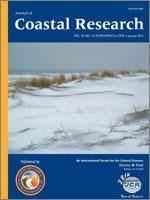High concentrations of nutrients from agricultural and urban runoff, or those produced by coastal upwelling, are causing algal blooms in many estuaries and coastal waters. Algal blooms induce eutrophic conditions, depleting oxygen levels needed by organic life, limiting aquatic plant growth by reducing water transparency, and producing toxins that can harm fish, benthic animals, and humans. The magnitude and frequency of phytoplankton blooms have increased globally in recent decades, as shown in data from ocean-color sensors on-board satellites. Satellite and airborne measurements of spectral reflectance (ocean color) represent an effective way for monitoring phytoplankton by its proxy, chlorophyll-a, the green pigment that is present in all algae. This article reviews the use of remote sensing techniques for detecting phytoplankton and mapping algal blooms. Two case studies are presented, illustrating the advantages and limitations of satellite and airborne remote sensing.
How to translate text using browser tools
1 January 2012
Remote Sensing of Algal Blooms: An Overview with Case Studies
Victor Klemas
ACCESS THE FULL ARTICLE

Journal of Coastal Research
Vol. 28 • No. 1A
January 2012
Vol. 28 • No. 1A
January 2012
Eutrophication
harmful algal blooms
phytoplankton blooms
remote sensing




